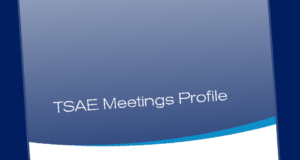
SPONSORED CONTENT BY ONBOARD
As the world emerges from COVID-19 restrictions, hybrid meetings (which combine a virtual and in-person audience) have become a popular meeting format for many boards. It provides flexibility as board members who are comfortable attending meetings in-person can do so, while those with health concerns can attend virtually.
However, a hybrid meeting is more complex than an in-person or fully virtual meeting. Done poorly, remote participants often struggle to see and hear the meeting content.
If your hybrid-meeting approach disengages and undervalues any participant, you need to rethink your hybrid-meeting strategy. It’s crucial your meeting design works for all attendees — whether in the room or miles away.
To help you increase board effectiveness, OnBoard created this detailed guide to host an effective hybrid meeting. Most importantly, you’ll discover key strategies to increase the effectiveness of your next hybrid meeting. But first, let’s start with the basics.
What Is a Hybrid Meeting?
A hybrid meeting is a mix of in-person participants and remote meeting attendees. When COVID-19 hit in 2020, social distancing guidelines forced organizations to abandon physical operations.
But not every board had the option to pause meetings or put conversations on hold. To keep the discussion flowing, many boards leveraged virtual meetings.
As we start to move beyond the pandemic, boards are increasingly experimenting with hybrid meetings.
However, hybrid meetings aren’t a silver bullet for boards — the meeting model has its pros and cons.
The main benefit of the hybrid model is it allows board members to attend meetings in-person, while those with underlying health concerns or travel constraints can participate virtually.
The primary disadvantage of most hybrid meetings is reduced participation. In some hybrid models, it’s difficult for remote participants to pick up non-verbal communication cues like:
- Nods of approval
- Expressions of confusion
- Facial expressions of discontent
The good news is that advanced technology is here to streamline hybrid board meetings. Robust virtual meeting technology empowers your board to host more effective hybrid meetings.
Regardless of their location, remote participants can use video conferencing and audio tools to participate and share content, ensuring everyone is on the same page.
How to Host a Hybrid Meeting
Are you looking to mend a flawed approach to hosting a hybrid meeting? The guide below walks you through the steps to host successful hybrid meetings.
1. Provide Guidance and Mentorship
As organizations return to offices worldwide, board meetings are increasingly shifting to hybrid models. After all, a perfect blend of virtual and physical meetings is becoming the new normal. In our webinar, “Preparing Your Board for 2022,” 54% of the participants said their companies are hosting hybrid meetings.
This can mean only one thing. The concept of “temporary remote meetings” is here to stay. For this reason, board leaders must guide and mentor board members as they adjust to a new way of holding meetings.
Depending on the board bylaws, hybrid meetings may be unavoidable in your organization. In addition to board bylaws, logistical issues, limited travel budgets, and a geographically diverse board may make hybrid meetings inevitable.
As the board leader, you should plan and prepare carefully to minimize issues associated with hybrid board meetings. You should plan the venue and agenda appropriately. Apart from that, the timing of the meeting should accommodate both virtual and in-person participants as much as possible. The goal is to ensure inclusivity where all board members are on the same page, equally satisfied, and engaged during the meeting.
2. Invest in Hybrid Meeting Technology
There’s no doubt the pandemic accelerated the use of virtual meeting technologies. Fortunately, meeting platform companies continue to introduce new features to improve interaction and communication between remote and in-person meeting participants.
Identify the right meeting technology features you’ll need to improve your board members’ experience in hybrid meetings. Some of the advanced hybrid meeting technologies include:
- High-quality microphones: They prevent poor audio issues during meetings and ensure remote meeting attendees can engage with the discussion.
- Robust video-conferencing: The best technologies utilize best-in-class streaming capabilities for a seamless hybrid meeting experience.
High-quality video helps to identify non-verbal cues, unlike audio-only board meetings. On top of that, virtual participants can see shared PowerPoint presentations, flipcharts, and whiteboard content created in real-time.
3. Communicate Asynchronously
Put simply, asynchronous communication is a communication that doesn’t occur in real-time, such as an email. In the context of a board meeting, in-person participants can discuss the agenda without virtual attendees participating in real-time. However, the virtual board members can still access the same meeting information as the in-person participants.
Asynchronous communication offers a better hybrid model than real-time hybrid meetings. It’s more flexible because getting board members to attend a meeting at a specific time isn’t always easy, especially if they live in different time zones and locations.
So, how do you communicate asynchronously? Powerful board portals, like OnBoard, make it easy by allowing you to store and share all essential board documents on one platform.
For instance, you can store and share meeting minutes, as well as agendas for virtual board members to access on-demand from a central platform. OnBoard also eliminates paper materials and streamlines board governance by reducing manual tasks. It also breaks geographical barriers since any board member can access shared documents from the cloud.
How OnBoard Powers Effective Hybrid Meetings
As the world recovers from the pandemic and board members begin to resume in-person meetings, hybrid meetings will increasingly become more popular.
When boards leverage hybrid meeting technologies like OnBoard, they create equitable meeting models where all participants feel valued and engaged. With OnBoard, you access powerful software features that drive board effectiveness, intelligence, and collaboration. Don’t take our word for it. Request your FREE trial to streamline hybrid meetings in your organization.
 Association Leadership TSAE: Connecting association professionals to peers, resources, information and inspiration.
Association Leadership TSAE: Connecting association professionals to peers, resources, information and inspiration.



